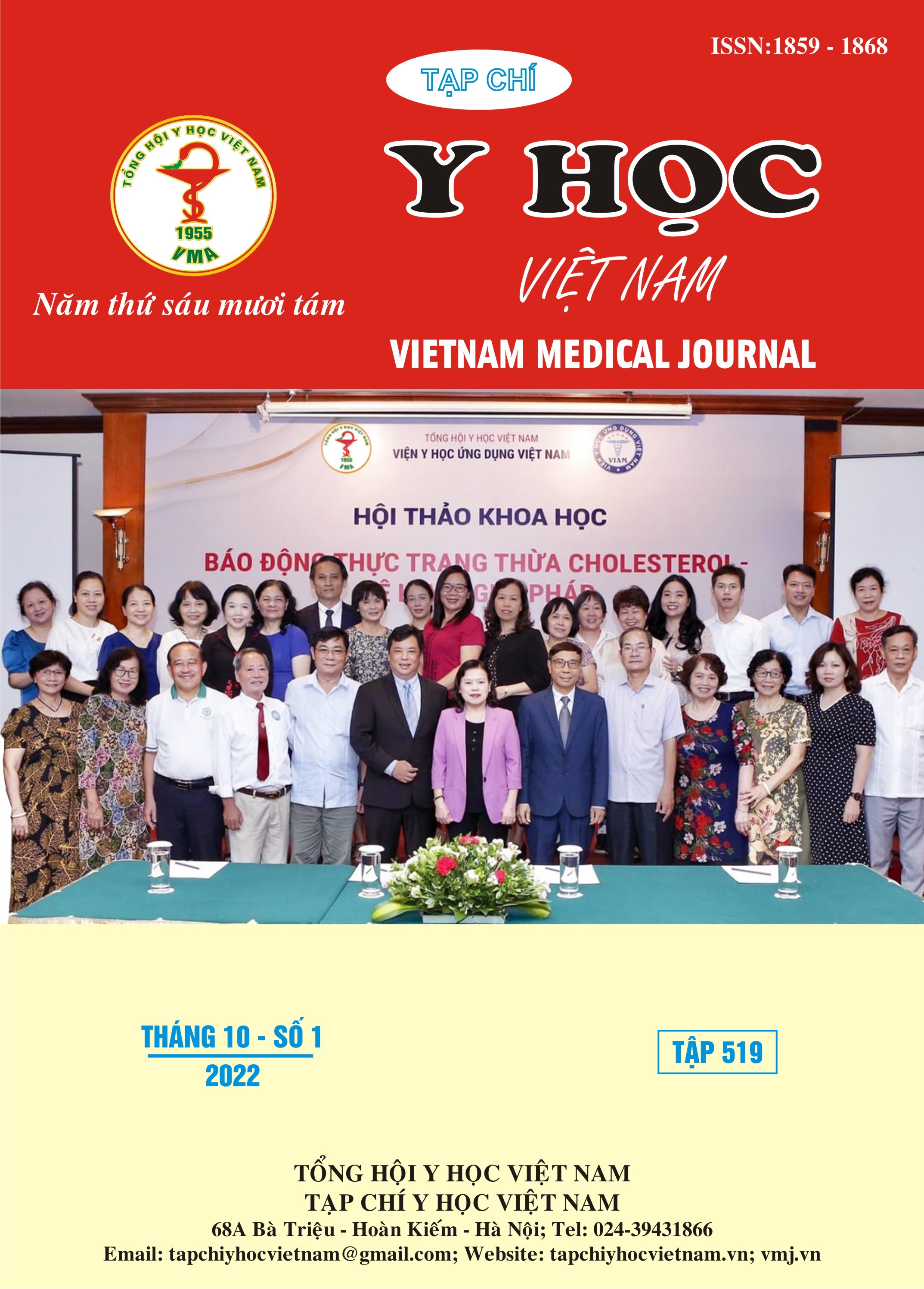PROGNOSIS OF ACUTE HYPERTENSIVE BASAL GANGLIA INTRACEREBRAL HEMORRHAGE
Main Article Content
Abstract
Objective: To describe clinical features acute hypertensive basal ganglia intracerebral hemorrhage. Subjects and methods: a prospective, descriptive study of 121 patients with acute hypertensive basal ganglia intracerebral hemorrhage at Department of Neurology, Bach Mai Hospital from June 2021 to June 2022. Results: The mean age of the study group was 59.6 ±11.5. Male/Female ratio 1.9. The prevalence is higher in age groups 45 years and older, especially two age groups 55-64 (40.5%) and 65 (27.8%) In terms of prognostic factors, the study showed in the age group < 65 years old, the bad progression rate was 27.4%, in the age group ≥ 65, the bad progression rate was 64.9%, so in the age group ≥ 65 years, the prognosis was worse, p < 0,01, statistically significant difference. Systolic blood pressure at admission ≥ 180 mmHg has a worse prognosis with p < 0,05, statistically significant difference. In the group with GCS ≤ 12 points, bad progression rate is 0.412 times higher than group with GCS >12 points, OR is in the range 0.173-0.986 without 1, p < 0.05, statistically significant difference. In the group with intraventricular hemorrhage, the rate of bad progress (57.6%) was higher than the rate of good progress (42.4%) with p < 0.05, the difference was statistically significant. Conclusion: The study was conducted on 121 patients with central acute cerebral hemorrhage due to hypertension treated at Bach Mai Neurological Center from July 2021 to June 2022. The mean age of the study group. is 59.6±11.5. Male/Female ratio 1.9. The results showed that the factors that are valuable in predicting poor outcome in patients with hypertensive central gray nucleus acute cerebral hemorrhage include: age ≥ 65 years, systolic blood pressure at admission ≥ 180 mmHg , GCS ≤ 12 points, intraventricular hemorrhage.
Article Details
Keywords
basal ganglia hemorrhage, prognosis
References
2. Flaherty ML, Woo D, Haverbusch M, et al. Racial variations in location and risk of intracerebral hemorrhage. Stroke. 2005;36(5):934-937. doi:10.1161/01.STR.0000160756.72109.95
3. Qureshi AI, Mendelow AD, Hanley DF. Intracerebral haemorrhage. The Lancet. 2009;373(9675):1632-1644. doi:10.1016/S0140-6736(09)60371-8
4. Hu Y zhen, Wang J wen, Luo B yan. Epidemiological and clinical characteristics of 266 cases of intracerebral hemorrhage in Hangzhou, China. J Zhejiang Univ Sci B. 2013;14(6):496-504. doi:10.1631/jzus.B1200332
5. Safatli DA, Günther A, Schlattmann P, Schwarz F, Kalff R, Ewald C. Predictors of 30-day mortality in patients with spontaneous primary intracerebral hemorrhage. Surg Neurol Int. 2016;7(Suppl 18):S510. doi:10.4103/2152-7806.187493
6. Juvela S. Risk factors for impaired outcome after spontaneous intracerebral hemorrhage. Arch Neurol. 1995;52(12):1193-1200. doi:10.1001/ archneur.1995.00540360071018


